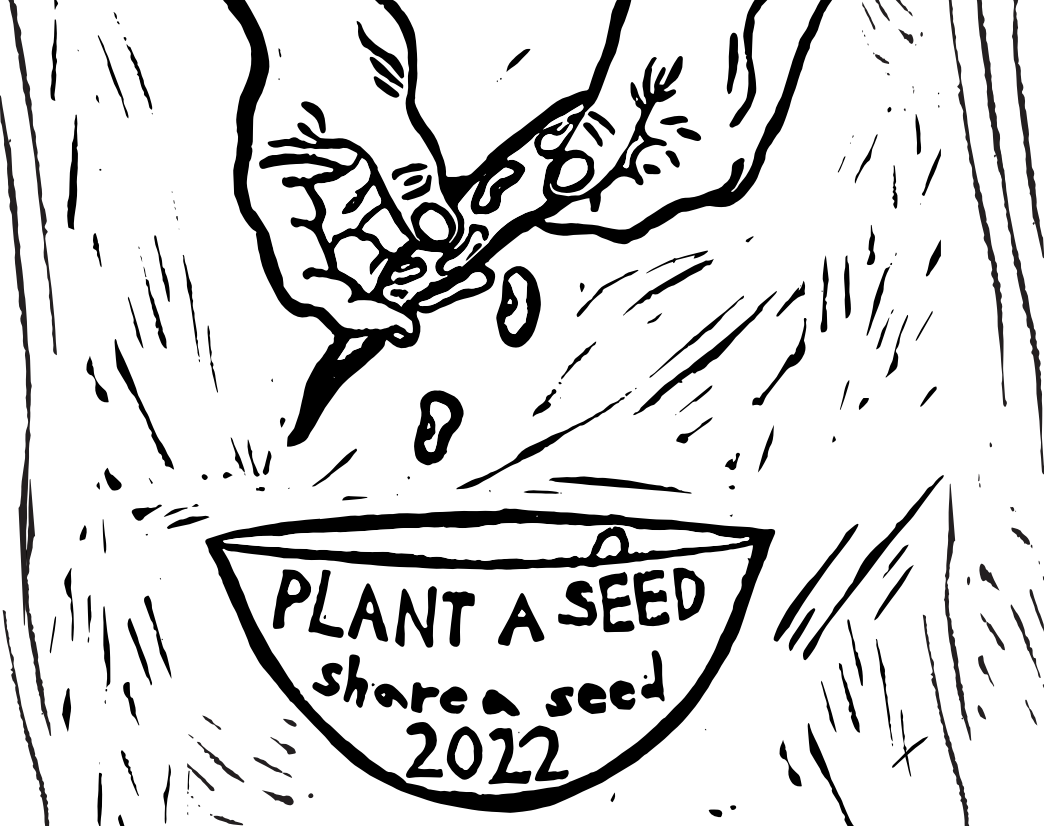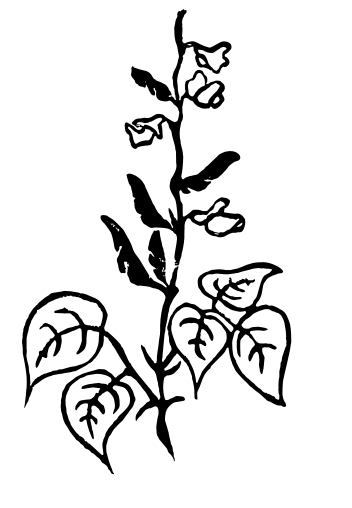
By Charlie Nardozzi, Guest Blog Writer
Charlie Nardozzi is a regional Emmy award winning garden writer, speaker, radio, and television personality. He has worked for more than 30 years bringing expert gardening information to home gardeners through radio, television, talks, tours, on-line, and the printed page. Charlie delights in making gardening information simple, easy, fun and accessible to everyone.
 Thanks for taking part in the 2022 Plant a Seed Program! This year’s theme is beans, and we are delighted to provide you with an additional resource to help make your bean gardens prolific.
Thanks for taking part in the 2022 Plant a Seed Program! This year’s theme is beans, and we are delighted to provide you with an additional resource to help make your bean gardens prolific.
Beans are one of the easiest vegetables to grow; they offer a high likelihood of success. The bean varieties in this year’s packet are all dried, shelling beans. This means the bean pods are left on the plant until the shells and beans are dry; then they are harvested. Although you could eat these beans as young, immature fruits as you do a snap bean, the beauty of these varieties is the rich flavor and diversity of tastes when eaten as a dried bean. Here are some tips on how to grow your beans:
- Bean varieties can grow in a bush form or climb like a pole bean. Determine which varieties you have because they will be grown differently. (For the Plant A Seed Kits, Cherokee Trail of Tears is a pole bean, Four Corners Gold is a semi-pole bean, and Arikara Yellow, Hank’s X-tra Special, Rockwell, and Santa Maria Pinquito are bush beans. More information about Plant a Seed beans can be found in the Bean Zine in your kit or here online!)
- Beans like sunny, warm spots with well-drained soil and are best sown in raised beds.
- Beans are sown from seed usually at or after your last frost date in your area. Check with the Cooperative Extension or Master Gardeners to determine your expected last frost date.
 Sow bush bean seeds 1 inch deep, spaced 2 to 3 inches apart in rows 2 feet apart. Thin to 4 to 6 inches apart. Sow climbing bean varieties around the poles of a trellis, teepee or fence, spacing two to three bean plants evenly around the pole.
Sow bush bean seeds 1 inch deep, spaced 2 to 3 inches apart in rows 2 feet apart. Thin to 4 to 6 inches apart. Sow climbing bean varieties around the poles of a trellis, teepee or fence, spacing two to three bean plants evenly around the pole.- Once the beans germinate, keep well weeded and watered.
- Beans have the ability to create their own nitrogen fertilizer through a relationship with a fungus on their roots, so there’s no need to fertilize beans. In fact, if you add too much compost or fertilizer, you may get big leafy plants with few beans.
- Since beans can create their own fertilizer, a good tip is to plant leafy greens, such as lettuce, kale and collards, next to rows of beans or under the pole bean teepee. These greens will get the advantage of the fertilizer from the beans and give you a nice harvest of greens.
- As the bean plants mature, watch for pests such as the Mexican bean beetle. The adult looks like a ladybug, and the young form causes lots of damage. Check the undersides of the leaves for clusters of yellow eggs and crush them to control this bean pest.
 As your beans start to mature, the leaves will begin to yellow and drop. Watch for the right time to harvest. Wait until the shells have dried and the beans are rattling around inside the pod. You can also check by pressing your fingernail against the bean. If dry, it shouldn’t pierce the bean. Cut back on watering to help the bean pods dry.
As your beans start to mature, the leaves will begin to yellow and drop. Watch for the right time to harvest. Wait until the shells have dried and the beans are rattling around inside the pod. You can also check by pressing your fingernail against the bean. If dry, it shouldn’t pierce the bean. Cut back on watering to help the bean pods dry.- If you live in a short summer area of the country, harvest the plants even before they’re fully dried if snow or freezing weather is predicted. Continue drying the plants in a well ventilated shed, garage or barn.
- To separate the beans from the shells, simply crack open the shells. If you have lots of beans, place them in a burlap sack and gently crush the pods by pressing on them. Store in glass jars in a cool, dark place for winter.
- Another way to grow pole beans is as part of a three sisters planting. Create a 2- to 3-foot diameter mound of soil about 6 to 8 inches high and plant a sturdy variety of corn such as the heirloom Black Aztec. Once the corn is 6 to 8 inches tall, plant the four beans around each stalk. About one week later, plant six squash seeds around the mound. The beans climb on the corn while feeding them, and the squash grows around the mound.
Photo Credits
Bean linocuts | Donna Waterman | Instagram @bigdstamps
Beans and gourds vine tee-pee illustration | Sharon Lovejoy | Sunflower Houses

 Sow bush bean seeds 1 inch deep, spaced 2 to 3 inches apart in rows 2 feet apart. Thin to 4 to 6 inches apart. Sow climbing bean varieties around the poles of a trellis, teepee or fence, spacing two to three bean plants evenly around the pole.
Sow bush bean seeds 1 inch deep, spaced 2 to 3 inches apart in rows 2 feet apart. Thin to 4 to 6 inches apart. Sow climbing bean varieties around the poles of a trellis, teepee or fence, spacing two to three bean plants evenly around the pole. As your beans start to mature, the leaves will begin to yellow and drop. Watch for the right time to harvest. Wait until the shells have dried and the beans are rattling around inside the pod. You can also check by pressing your fingernail against the bean. If dry, it shouldn’t pierce the bean. Cut back on watering to help the bean pods dry.
As your beans start to mature, the leaves will begin to yellow and drop. Watch for the right time to harvest. Wait until the shells have dried and the beans are rattling around inside the pod. You can also check by pressing your fingernail against the bean. If dry, it shouldn’t pierce the bean. Cut back on watering to help the bean pods dry.